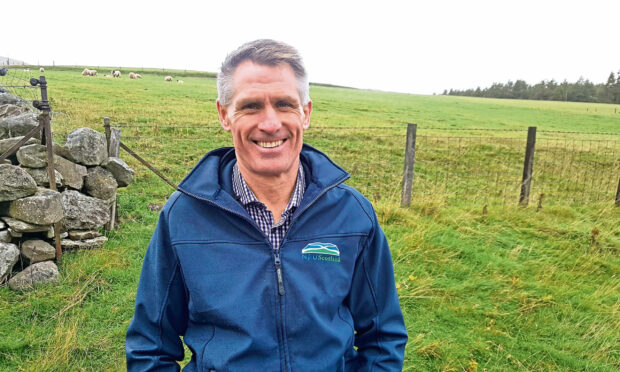Unless Scotland’s new Agriculture Bill puts farmers and food production first, the intended policy objectives will fail, including the drive to address climate change mitigation, biodiversity and the general development of the rural economy.
That is the core message behind NFU Scotland’s 55-page consultation response to the Scottish Government’s Agriculture Bill proposal, delivered yesterday alongside a warning that ministers must move quickly to fill an “alarming policy void” if they are to restore confidence levels among farmers and crofters.
“Future agricultural policy must, first and foremost, work in the interests of Scottish farming, primarily enabling producers to deliver on food production,” said NFU Scotland director of policy Jonnie Hall.
“On the back of this, rather than in front of production, farmers and crofters will be able to deliver on climate change, biodiversity in terms of nature restoration, and the wider rural development objectives that only active farming and crofting can secure.”
Disappointingly, some proposals for the new Bill set out a route towards increasing layers of additional red tape.
Further warning the Scottish Government against the pursuit of a “misplaced vision” in relation to turning farm support policy upside down, leaving food production at the bottom of the chain, the union stressed that the new Agriculture Bill needs to be the beginning of change, not the end.
“If the Scottish Government listens to us on these issues, then we believe the outcomes they want to achieve can be delivered,” said NFU Scotland president Martin Kennedy.
“If they don’t listen, however, they not only risk losing farmers’ ability in relation to food production, but also risk losing the economy of Scotland as a whole.”
NFUS critical of specific policy options
Behind this core message, the union’s consultation response is also critical of a “disappointing absence” of specific policy options from the Scottish Government, leaving farmers without clarity on how they will be supported in the future.
Despite welcoming the Agriculture Bill’s intended shift to a new four-tier structure of direct and indirect support, as initiated by NFUS in 2018, the union urged the Scottish Government to be clearer on how the new format will work, especially in terms of “conditionality”.
We have a bold Vision for Agriculture that aims to transform how we support farming and food production in Scotland.
The consultation for our new Agriculture Bill is open until Monday 5 December.
Let us know your thoughts➡️https://t.co/tIuYWJLqvE pic.twitter.com/lKUdZevpHL
— Scot Gov Rural (@ScotGovRural) November 28, 2022
“Disappointingly, some proposals for the new Bill set out a route towards increasing layers of additional red tape and additional costs in the pursuit of goals that may add little or nothing to the bottom line of too many agricultural businesses, many of which are already facing extreme financial pressures,” said Mr Hall.
Concerns over budget issues also continue, not least the extent to which UK funding for agriculture may or may not be ring-fenced once it crosses the border into Scotland.
Acknowledging, in addition, that some organisations will inevitably argue for more money to be funnelled towards indirect support areas, the union concluded with a warning that this would “seriously undermine agricultural businesses the length and breadth of Scotland”.

Conversation